Boat positioning is more important than lure color. Everything else will go wrong if this one thing isn't done right.
I think a lot of people don't understand the experience, skill and downright work that goes into my fishing trips. For a lot of people the fishing trips I embark on are just an adventure where everything just sort of falls into place on its own without any input on my part.
This cannot be further from the truth.
Every minute of the trip I am paying close attention to something, whether its the hum of the motor behind me (Is it making unusual noises?) or the wildlife around us in the marsh (Are fish chasing bait?).
When I approach a fishing spot, I am consciously calculating the direction of the wind and current in relation to where I believe the fish are biting so I can best position the boat on fish.
It's not a skill everyone has, and if I did not have it my fishing trips would not be nearly as productive.
Effectively positioning the boat is everything when it comes to catching fish. Let me share with you some great pointers on how to do this and things you want to consider before dropping that anchor:
How to Position the Boat on Fish
Why do you want to position the boat correctly?
To make fishing more enjoyable!
When the boat is positioned correctly you are able to do everything more easily, to include catching fish.
You want everyone to be able to cast at the fish effectively and be able to do so with ease. When this happens a lot of stress is taken out of the fishing trip and everyone enjoys themselves more.
You also position the boat correctly so you can achieve the best presentation of your bait to the fish.
Knowledge Bomb Generally speaking, within the realm of inshore fishing, you want your bait drifting left to right (or vice versa) with the current, in front of you through where fish are biting.
You don't want your bait drifting towards the boat or away from the boat. Bait drifting towards you can create slack in the line possibly causing missed strikes.
Bait drifting away from the boat will eventually run out of line and "surf" on top of the current. This can make for weird presentations that fish are less likely to bite.
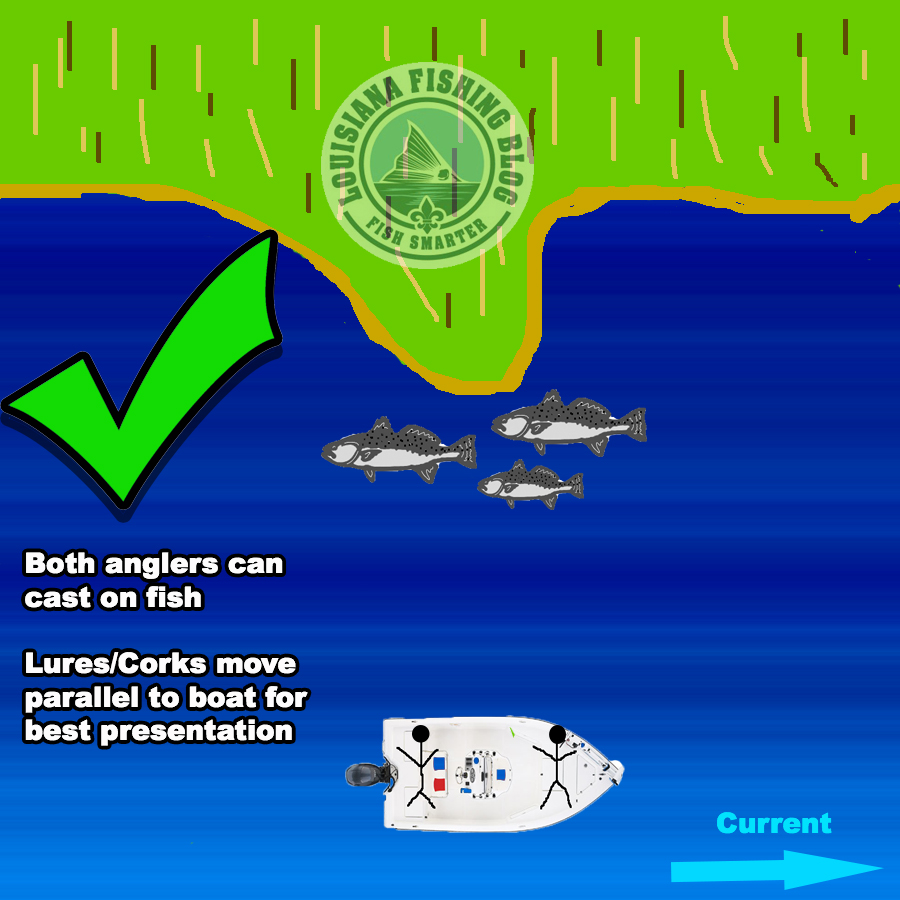
Good Boat Positioning is key to catching more fish and having a great time.
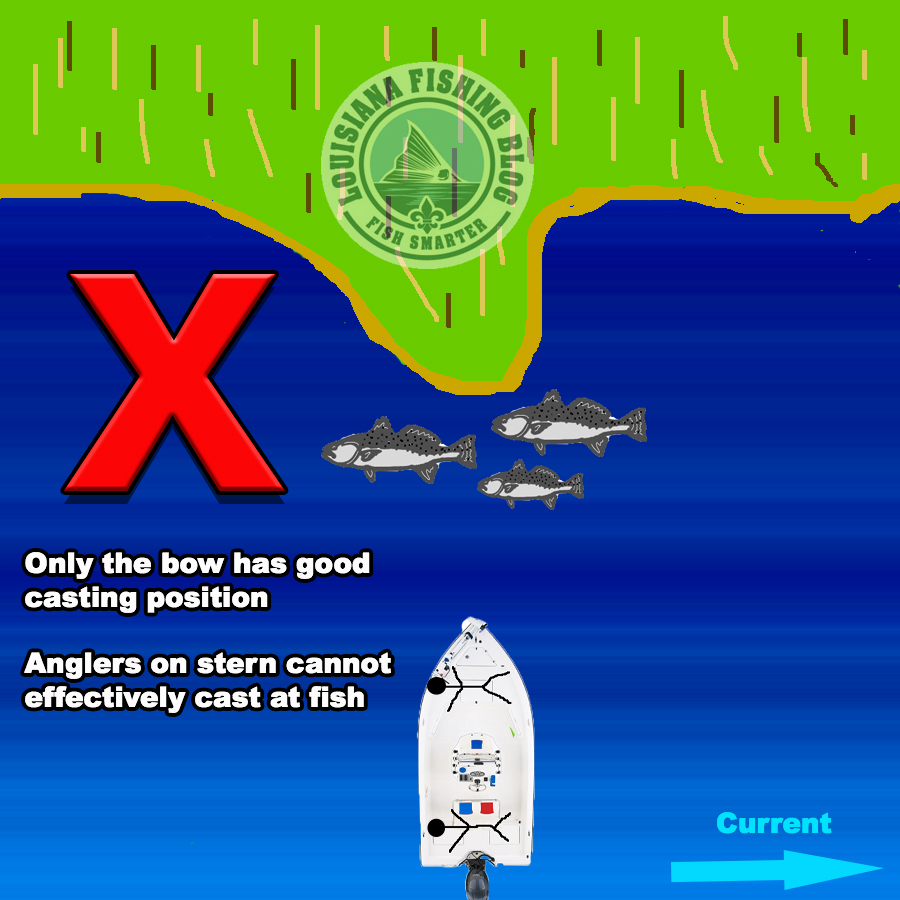
This boat positioning still works, it's just not the best. It is difficult for anglers in the rear of the boat to cast at fish. If you are by yourself, then this is not an issue.
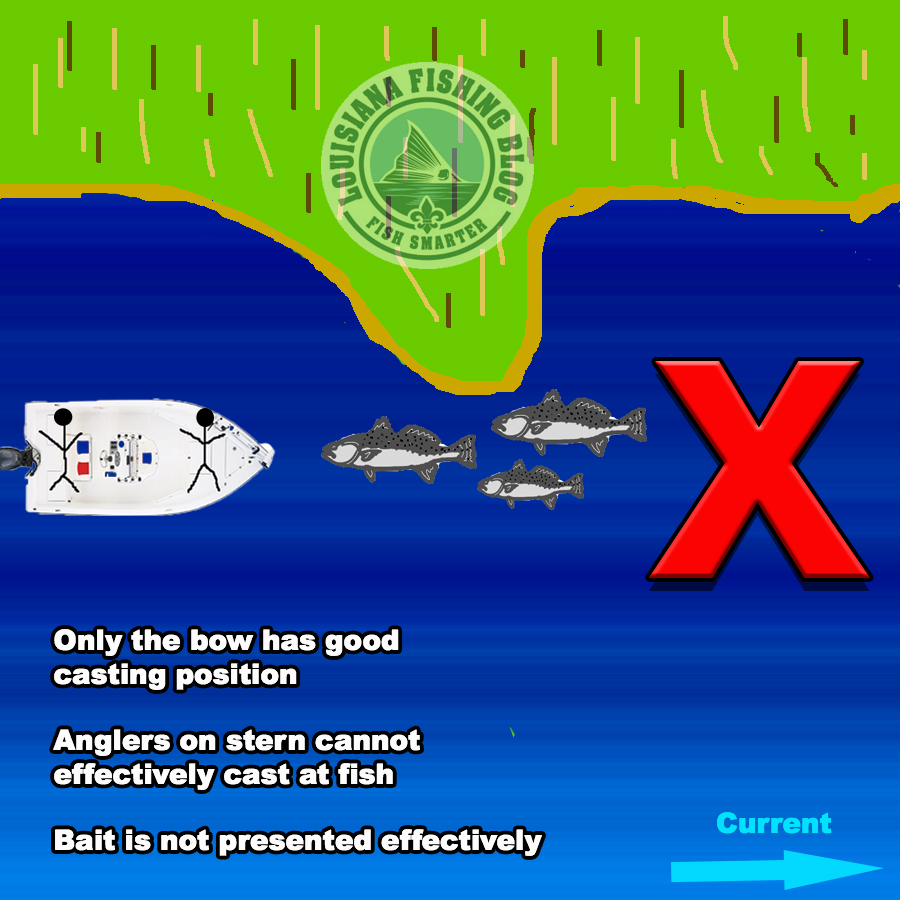
Casting at water moving away from the boat can hamper presentations, whether you are throwing a jig or a cork. The pushing current combined with the taut line can pull/push the bait towards the surface.
When the boat is positioned just right, you won't have to fight the wind. In fact, you will be Fishing Smarter and using the wind to your advantage!
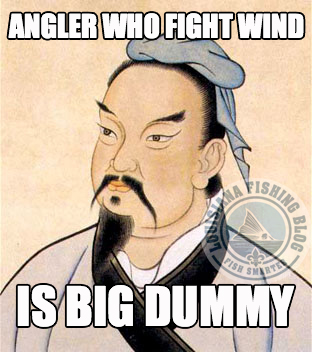
Factors to Consider When Getting Ready to Position the Boat
When I am approaching a fishing spot I will usually come off plane from a reasonable distance and judge the conditions at hand.
Conditions I am paying attention to include:
Wind Speed & Direction
You want the wind to your back when you are casting at fish. Very rarely do you want the wind blowing in your face because it can make casting difficult.
If a strong wind is to your back then it will be extremely easy to cast and life will be good!
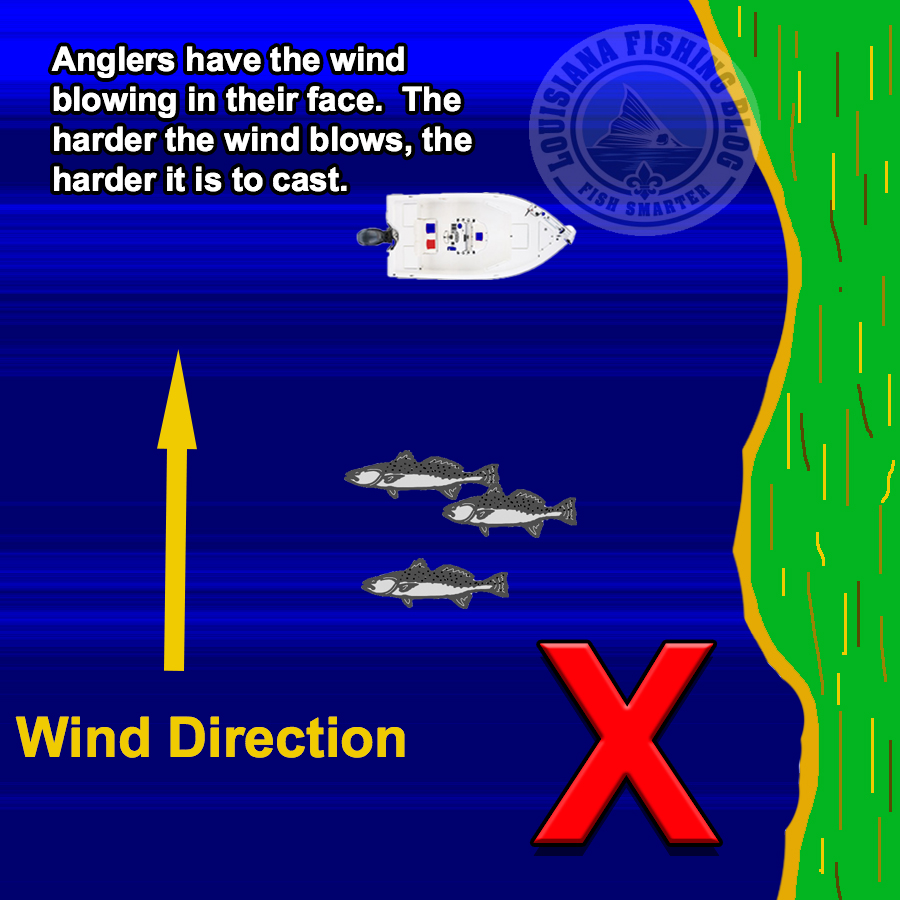
The stronger the wind, the more difficult it will be to cast. Set yourself up for success and position the boat correctly the first time.
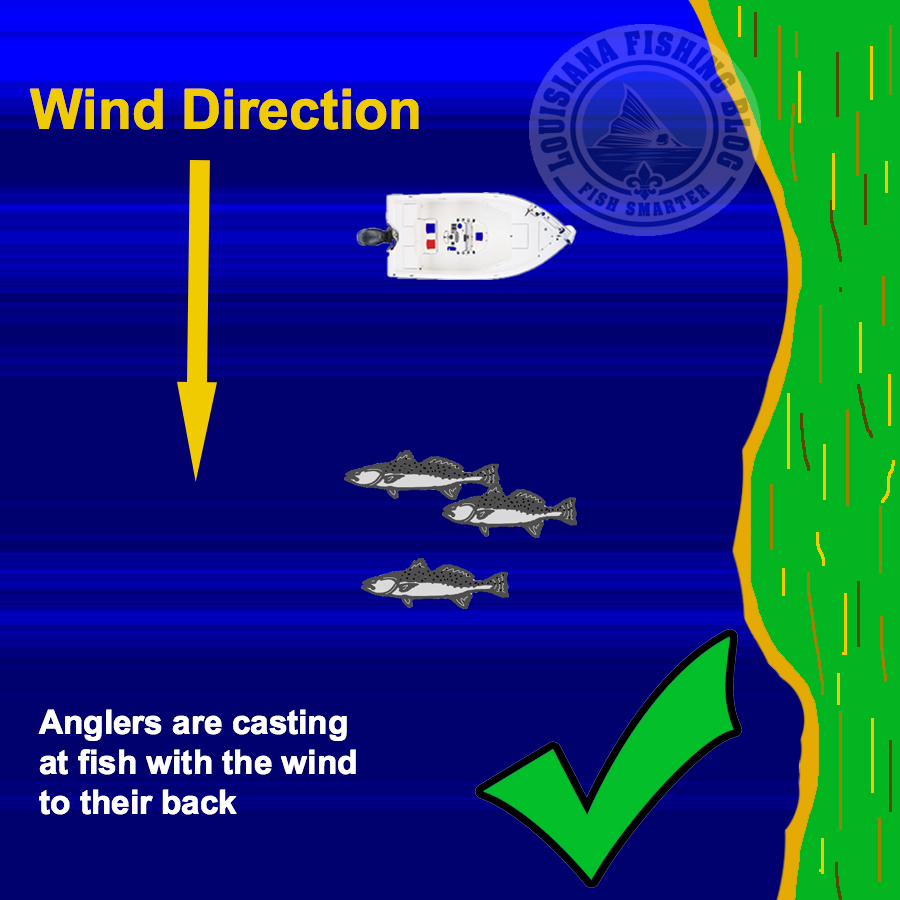
It's easier to catch fish when the wind is blowing to your back.
For additional tips on how to deal with a strong wind, read Making the Most of Heavy Winds.
Water Current
To me, this is not as important as wind speed and direction, but is something to pay attention to.
Sometimes the wind is not blowing at all and the current is strong enough to sweep the boat from one side to the other.
If this is the case, I will kill the engine and drift for a minute before anchoring to get an idea as to how the wind and current are working together to influence the boat.
With experience you will become good at this. It will be apparent what you need to do in order to successfully position the boat on fish.
Location of Fish
With time and experience I have learned where fish typically hold at different fishing spots. If a spot is new, I simply make an educated guess as to where fish will be and position my boat accordingly.
You want to position the boat in such a manner that either side (port or starboard) is facing the fish. This way everyone has ample room to make quality casts on the fish. More quality casts equals more fish caught!
You want to judge how the wind and current will affect the boat and anchor it accordingly so you are positioned to effectively cast at the fish.
This means that on subsequent fishing trips your boat may be anchored differently to be positioned the same (or nearly the same) in order to cast at the same spot.
Methods for Positioning a Boat
One Anchor
Most people typically use one anchor, in the form of a Danforth anchor, Cajun anchor, or something fancy like a Power Pole or Minn Kota Talon.
It's simple, it's easy, but the boat can rotate on the axis of the anchor point, usually in part to the wind or current. This can be detrimental to how you position the boat on fish.
Be sure you are paying attention to which direction the boat will point when you put down a single anchor.
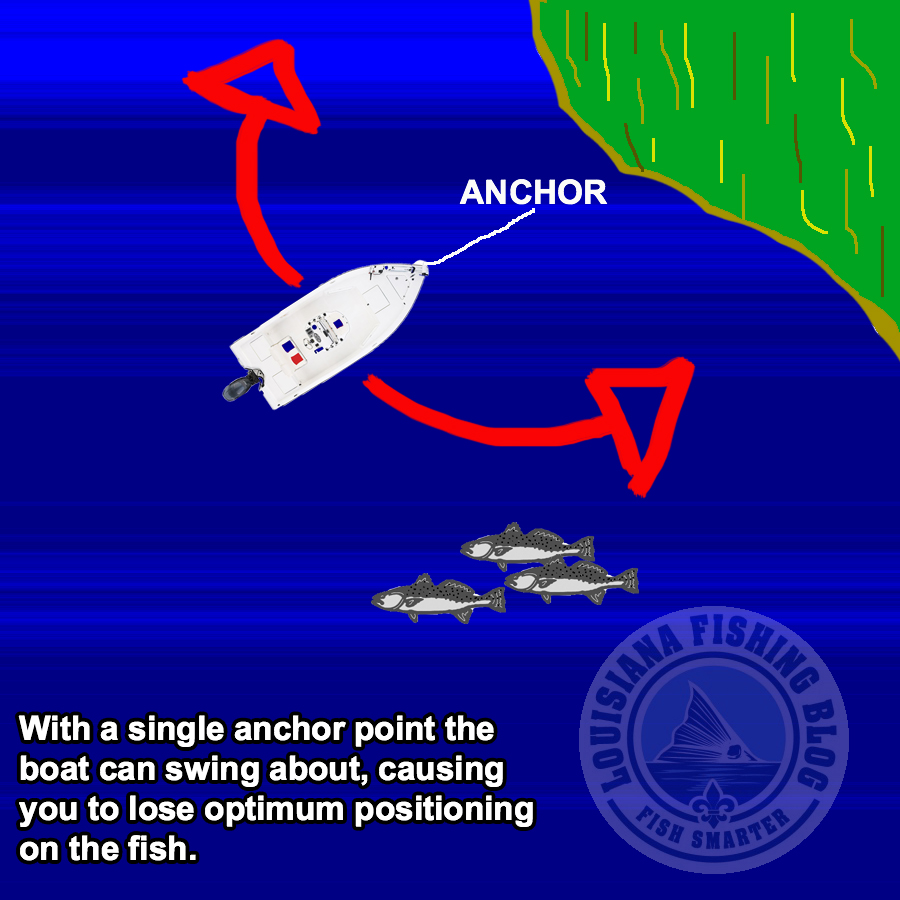
This method is common and is effective, just know that when you do set your anchor the boat's positioning will adjust with the wind.
Two Anchors
It can be a pain anchoring off with two anchors, one on each end of the boat, but the boat will not be prone to swing on the axis of a single anchor and potentially destroy good positioning on fish.
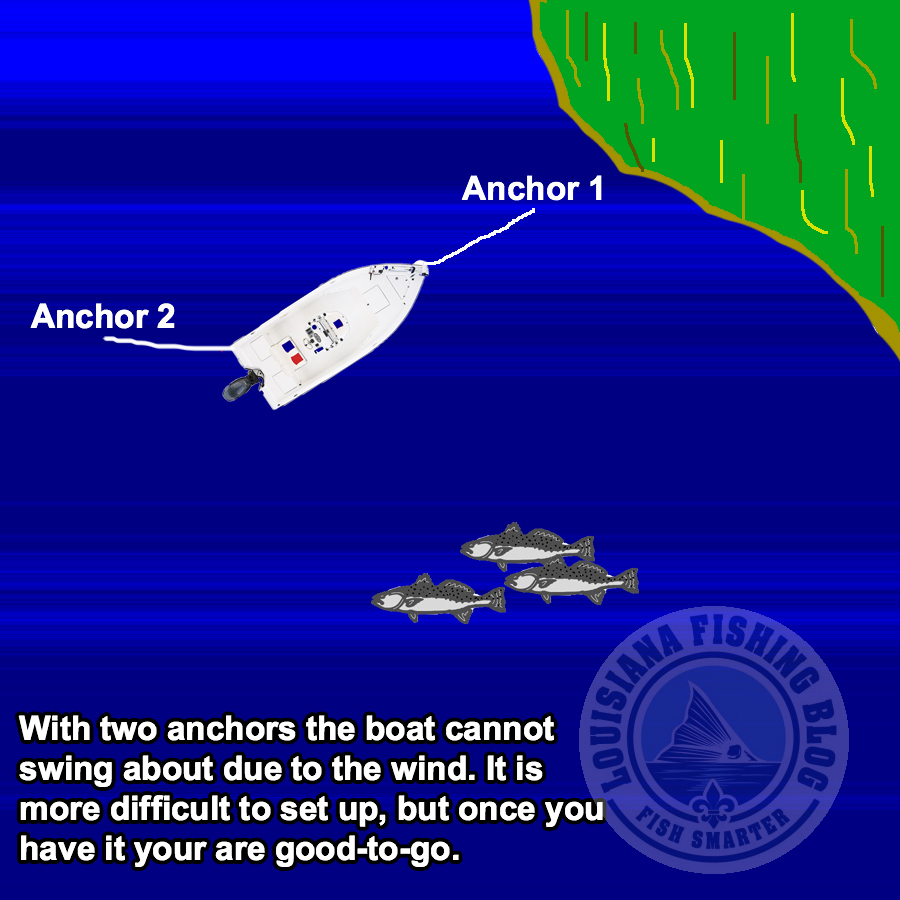
With two anchors the boat's positioning is secured and cannot swing on a single axis.
Want More?
These are factors you must consider on how to position the boat on fish and successfully catch your target species, whether it's speckled trout or redfish.
But there's more to making a great fishing trip happen. You need to know where to go based upon the conditions, what tackle to use and how to safely get to your fishing spots and back.
My total solution to teaching all of this knowledge is my course Inshore Fishing 101. It's only available in my membership, LAFB Elite.
Inside LAFB Elite you'll find all of my courses, to include the seasonal courses for fall, winter, spring and summer, as well as all of my seminar recordings.
Above all, you'll gain instant access to the LAFB Elite Community, where you can talk with like-minded anglers to learn where to go and what to do.
“
Captain Devin's Program Is Worth Your Time
I am a member of LAFB Elite, and can say that Devin is a very knowledgeable guy when it comes to fishing Louisiana's coast.
The investment in his courses is definitely worth it.
Plus, you can go back and look at all the past seminars or refresh what you've already taken.
“
Game Changer!
I moved here from Wisconsin and have friends that fish inshore very well.
After completing Inshore Fishing 101 I have seen a lot of things that you laid out to try and do that gives them success, but also there were things in here that could even help them.
The insight alone from MODIS and how to use Google Earth Desktop and the NOAA stations changed the game of how I approach my fishing trips.
I found that the way Captain Devin plans his fishing trips to be much more useful or at least much less time consuming than just running around until I got lucky.
